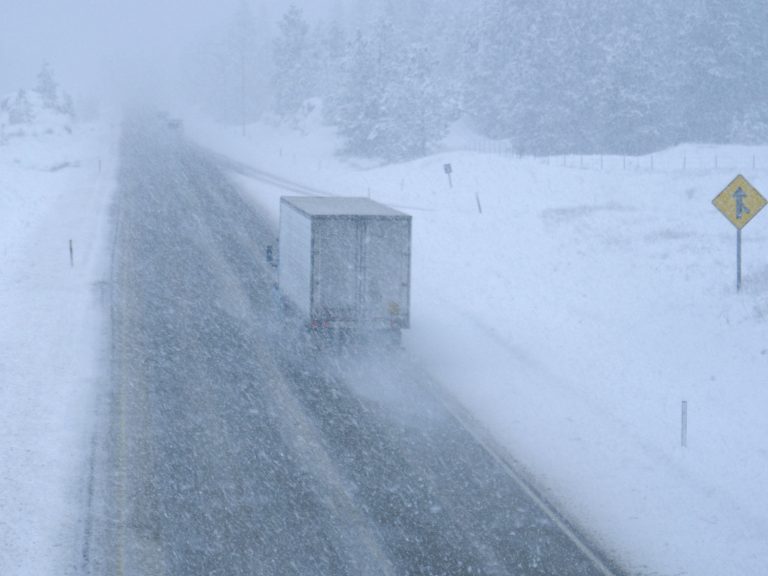
Date:
Protecting supply chains from extreme weather events
With wildfires across southern Europe and the UK experiencing it’s hottest ever heatwave – with freight trains cancelled and the port of Felixstowe putting their gritters out, to overcome melting roads – we review research from the Supply Chain Management Center at the University of Maryland on supply chains’ vulnerability to climate risk.
A study of 12,000 pharmaceutical, automotive and tech companies across the US, China and Taiwan found that just 11% are fully prepared for climate-related disruption, even though 49% in the US had experienced an increase in climate volatility and 93% in China and Taiwan.
The research, conducted over several decades, found 80% of sites in the US had no plans or alternative sites available to take over operations quickly in the event of disruption, and just under half of all sites in China and Taiwan were similarly unprepared, with only 11% of all sites in the three countries fully prepared for climate related disruptions.
And only the top 30% of those sites could shift production to an alternative site in 10 weeks or less. In addition, they had no formal business continuity plans.
The study recommended specific steps firms should take to bolster supply chain resilience to climate and other risks:
- Map the supply chain
The first step is to identify direct and indirect suppliers, because 50% of disruptions typically occur at the tier two supplier level. In most cases there is good visibility over critical vendor processes. It is very common for regional manufacturers to share a limited pool of sub suppliers, so while they may seem very diversified and resilient, they’re reliant on the same suppliers, which is why 50% of disruptions stem from tier two and below. - Assess risk
Once the vital links in the chain have been identified, the next step is to examine these sites’ vulnerabilities. This includes climate, natural disasters, local economic conditions, geopolitical risks, energy access, availability of labour and natural resources. Rank the revenue impact of each supplier, because that will prioritise where to invest resource to improve resiliency. - Manage risks upstream
Business continuity plans should proactively manage supplier networks so businesses can divert to alternative sources faster. MVT, our secure cloud-based workflow solution connects shippers to their suppliers and distribution networks, providing the visibility and control that makes it simple to switch to new suppliers. - Simulate supply chain impacts
Buyers should analyse and compare different supply network setups and sources in order to manage risk more effectively, observing climate impacts across a variety of configurations. - Collaborate with suppliers
Suppliers are vulnerable to disruption, not just from climate risk but from regulatory and customs bodies. In order to ensure vital suppliers are compliant and not stuck at the border, companies can incorporate business continuity planning into contracts. These could include backup plans, alternate production sites, and agreed-upon recovery timeframes. Collaborating with suppliers to develop these will also help businesses understand their vulnerabilities in the event of disruption. - Integrate tech systems
Connecting systems enhances the visibility and flow of orders and provides supply chain insights on a single platform. Data can be used to enhance forecasting and identify threats and opportunities in the supply chain, to increase risk mitigation. Additional sources of data, can be integrated to increase climate and disruption monitoring. Climate monitoring and predictive tools can allow for decades of data to be put to use in specific sites and locations, allowing users to understand essential vulnerabilities and risks.
However it is looking more and more likely that extreme weather events, including high temperatures, flooding caused by rain and storms, high winds and hurricanes/typhoons are a permanent feature, even if the worlds governments were to reach net zero in the foreseeable future. We will have to learn and adjust supply chains and logistics platforms to take into consideration the consequences of these occurrences of extreme weather, for many decades to come.
We work with our customers to improve supply chain resilience in key areas:
Understanding – With a thorough understanding of our customers’ requirements and objectives we create supply chain solutions that draw on the best options available in the current market, to meet their needs.
Visibility – Our cloud-based supply chain management platform, MVT, links new participants and events to provide visibility and control down to individual SKU level.
Flexibility – It is simple to divert supply lines, adding and monitoring new vendors, product flows and outbound order data, from any location.
Contingency – MVT’s exception alerts and rules-based solutions, correct operational non-conformities, without human intervention, or alert users to issues outside set-parameters for corrective action.
For specific information, or to discuss how our technology could support your supply chain, please contact Simon George our Technical Solutions Director or Elliot Carlile.
